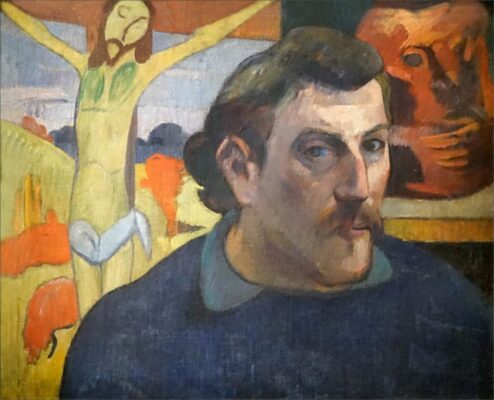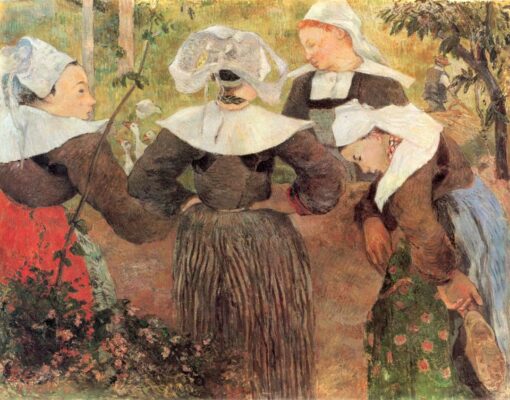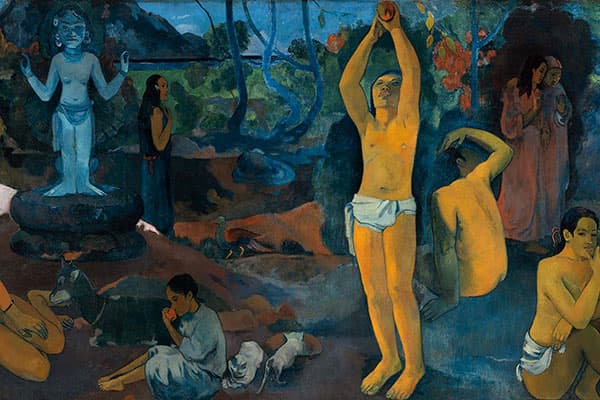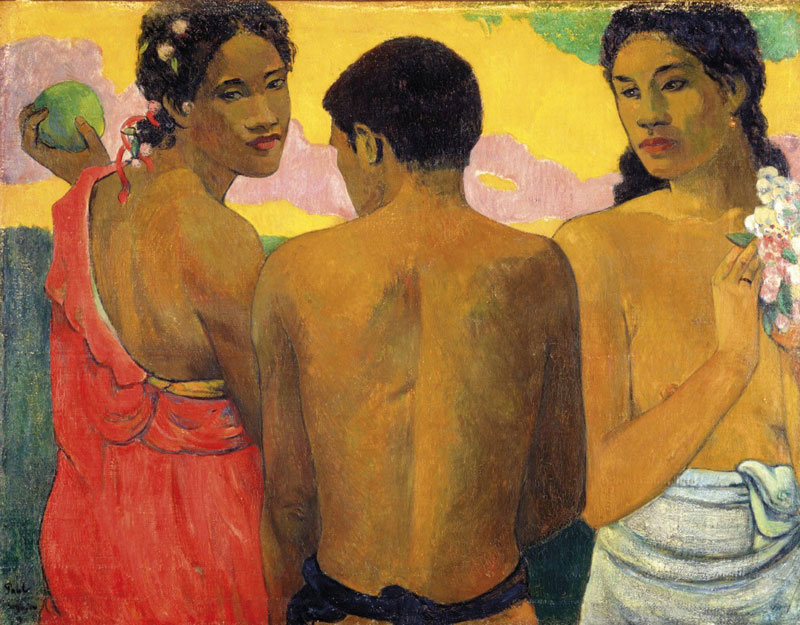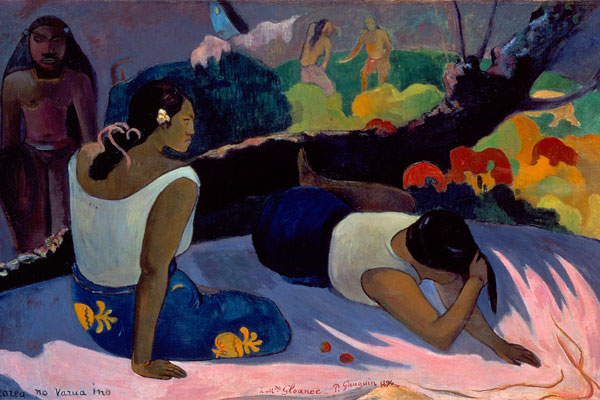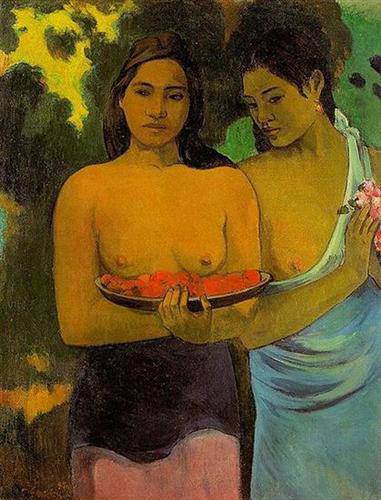Paul Gauguin
“Copying nature — what is that supposed to mean? Follow the masters! But why should one follow them? The only reason they are masters is that they didn’t follow anybody!”
Paul Gauguin
Paul Gauguin (1848-1903) is one of the most fascinating figures to emerge from the impressionist movement, a style that he soon abandoned in order to develop a personal style, sometimes related to symbolism, and essential to understand the avant-garde movements of the 20th century, such as fauvism and expressionism.
Imagen: Paul Gauguin: “Portrait de l’artiste au Christ jaune”, 1891. Oil on canvas, 38 x 46 cm. Paris, Musée d’Orsay
As Raymond Cogniat rightly pointed out, Gauguin, younger than the leading figures of Impressionism, was unable to take part in its formation, arriving “too late to give it the stamp of a new personal contribution“, experiencing it “as an initiation, not a discovery” (Raymond Cogniat, “Gauguin”, 1947). Moreover, Gauguin, born in Paris in 1848, spent several years of his childhood in Peru, where his mother gathered a small collection of pre-Columbian ceramics. All this formed the ideal breeding ground for Gauguin’s maturing attraction to adventure, to the “exotic” landscapes that would mark his adult life, his mature art, and thus the evolution of Western painting.
However, unlike other artists of his time, he did not begin painting at a very young age, but in 1873, just one year before the First Impressionist Exhibition. The paintings made by Gauguin in the 1870s show a clear influence of Pissarro, whom he admired. As a “conclusion” of this first impressionist stage, Gauguin took part in the impressionist exhibitions of 1881 and 1884. After this, Gauguin went through a period of economic difficulties. He travelled with his wife, the Danish Mette-Sophie Gad, to Copenhagen, but returned with one of his sons to Paris in 1885, while his wife remained in Denmark with the rest of the family. This is the period in which Gauguin made some of his most important paintings depicting the life in Brittany, although the key event for his future career were the trips he made to Panama and Martinique.
Although Gauguin only stayed a few months in Martinique, where he painted 11 works, the letters written during this period show the artist’s emotion towards nature and the “exotic” way of life. “Gauguin’s love for tropical countries, that passion, was an escape from civilisation. But it was also a search for that happiness experienced in his childhood years in South America” (Ingo F. Walther, “Gauguin”, 1989). He returned to France and in 1888 he moved to Arles to live with the painter Vincent van Gogh. The nine months that the two painters spent living together rank among the most intense, debated and strange chapters in the history of modern painting, which ended with the famous episode of Van Gogh cutting off part of his own ear (although recent studies indicate that it may have been Gauguin who cut it off) and Gauguin fleeing Arles, never to return again.
Paul Gauguin: “Bretonnes causant” (“La Danse des quatre Bretonnes”), 1891. Oil on canvas, 71,8 x 91,4 cm. Neue Pinakothek, Munich. Paul Gauguin: “D’où venons-nous? Que sommes-nous? Où allons-nous?”, 1897. Oil on canvas, 139.1 x 374.6 cm. Museum of Fine Arts, Boston.
In 1891, after having sold most of his works at the Hôtel Drouot in Paris, Gauguin travelled to Tahiti, in search of an artistic redemption, a comeback to the primitive and the exotic that could help him to find a way in which his Art could be “purified”. About Gauguin’s time in the Pacific, undoubtedly the most famous and fascinating period of his career, a complete essay -“Gauguin in the Tropics“- has been written here in theartwolf.com, so we will not go into details in this brief biography.
Today, Paul Gauguin’s works, especially those created during his time in Tahiti and the Marquesas Islands, continue to fascinate. The artist’s personal life, his relationship with his family and friends, and his now reprehensible relations with the young women of Tahiti, only add fuel to this fascination. Gauguin is also one of the most sought-after artists in the art market, and in 2015, his “Nafea Faa Ipoipo” was sold to Qatar for a price between $200 million and $300 million, one of the highest sums ever paid for a painting.
G. Fernández · theartwolf.com
Masterworks by Paul Gauguin
More about Paul Gauguin
Follow us on:

